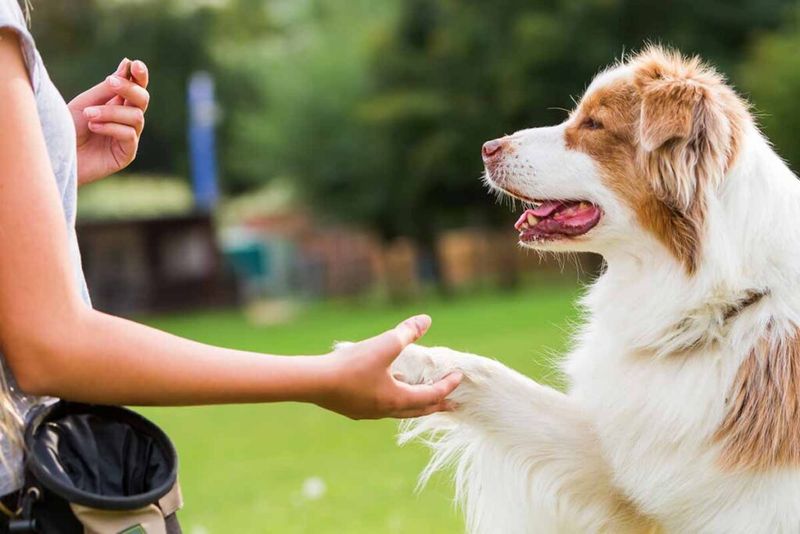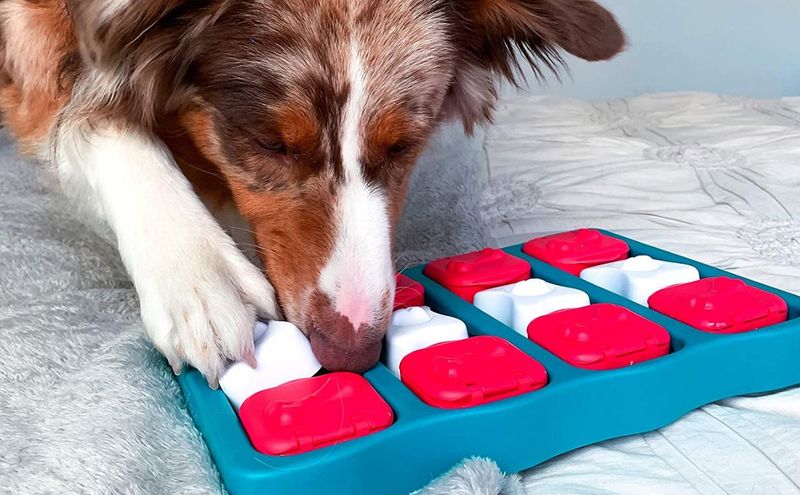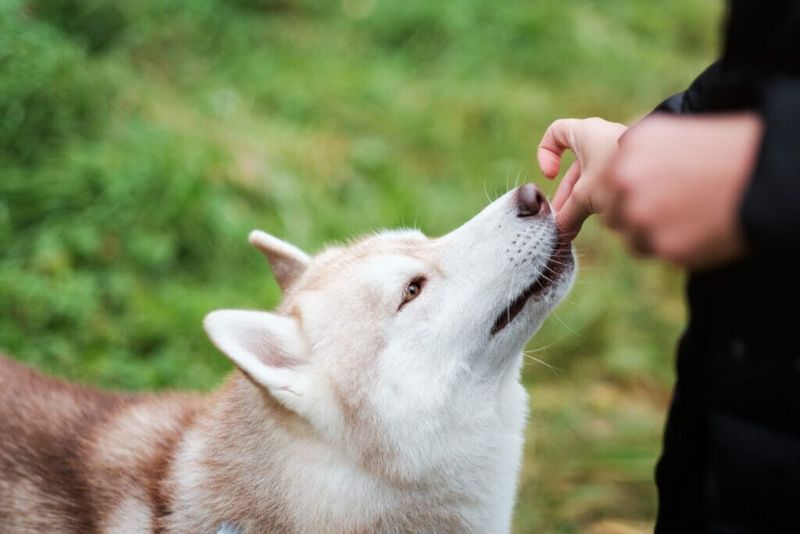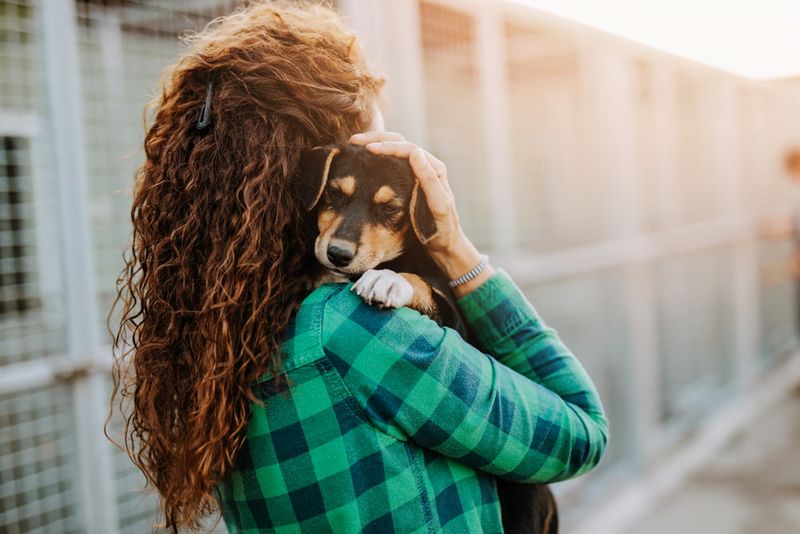14 Ways You Can Transform A Shelter Dog’s Life With Love And Care

Bringing a shelter dog into your home isn’t just about giving them a place to live – it’s about offering a second chance at happiness.
Many shelter dogs have faced neglect, abandonment, or loss before arriving at the shelter. Your love and dedication can completely transform their world from one of uncertainty to one filled with joy, comfort, and security.
1. Create A Safe Haven

Dogs from shelters often carry emotional baggage from past experiences. Setting up a quiet corner with a comfortable bed gives them a retreat when feeling overwhelmed.
Include familiar items from the shelter like a blanket or toy to ease the transition. Remember that patience is key – your new friend might need weeks to fully relax in their forever home.
2. Establish A Consistent Routine

Shelter dogs thrive on predictability after chaotic pasts. Regular feeding times, walks, and play sessions build security and trust in their new environment.
Your dog will quickly learn when to expect meals, bathroom breaks, and quality time with you. This structure reduces anxiety and helps them understand that good things happen regularly now – unlike their uncertain past.
3. Practice Patience During Adjustment

Your shelter pup might hide, have accidents, or show fear behaviors initially. Instead of punishment, offer gentle reassurance and space when needed.
Healing takes time – some dogs adjust in days while others need months to fully trust. Watch for small victories like the first tail wag or voluntary cuddle. These moments signal your patience is paying off as their confidence grows.
4. Provide Proper Nutrition

Many shelter dogs arrive undernourished or with digestive issues from stress and poor-quality food. Premium food appropriate for their age, size, and health needs fuels their recovery.
Fresh water should always be available too. Watching your dog transform from dull-coated and thin to glossy-furred and energetic through proper nutrition is incredibly rewarding – their bodies heal as their hearts do.
5. Master Basic Training Together

Simple commands like sit, stay, and come create communication channels between you and your new companion. Training sessions build confidence while strengthening your bond.
Keep sessions short and always end on a positive note. Use treats and praise generously! Training isn’t just about obedience – it’s mental stimulation that helps shelter dogs overcome past trauma and learn they can succeed.
6. Schedule Regular Veterinary Care

Shelter dogs often have unknown medical histories. A thorough checkup establishes baseline health and catches issues early. Your vet can recommend appropriate vaccinations, parasite prevention, and dental care.
Regular wellness visits continue throughout their life. Some shelters offer discounted first exams – ask about these resources! Addressing health concerns promptly shows your dog they’ll never again suffer in silence.
7. Encourage Gentle Socialization

Meeting new people and animals can be overwhelming for shelter dogs. Start with calm, controlled introductions in neutral settings. Watch body language for signs of stress and never force interactions.
Gradually expand their social circle as confidence grows. Positive experiences with diverse people, sounds, and environments build a well-adjusted companion. Each successful interaction helps erase negative associations from their past.
8. Play Interactive Games Daily

Mental stimulation is as crucial as physical exercise for shelter dogs. Puzzle toys, hide-and-seek, and training games prevent boredom while building problem-solving skills.
These activities tap into natural canine instincts in a constructive way. The joy on your dog’s face during play might be the first genuine happiness they’ve experienced in months! Regular play also reduces anxiety behaviors like destructive chewing.
9. Create Positive Associations

Some shelter dogs develop fears based on past experiences. Gentle exposure paired with treats helps overcome these anxieties. If your dog fears men with hats, invite male friends to toss treats without direct interaction initially.
Never force confrontation with feared objects or situations. Patience transforms these negative associations over time. Watching your once-fearful dog confidently approach what previously terrified them is incredibly rewarding.
10. Provide Daily Exercise Opportunities

Physical activity releases pent-up energy and stress for shelter dogs. Daily walks, play sessions, or hikes suit different energy levels and preferences.
Exercise strengthens your bond while improving physical health. Many behavior problems stem from insufficient activity – a tired dog is typically a well-behaved dog! Watching your once-kennel-bound friend joyfully explore the world becomes a daily gift for both of you.
11. Learn To Read Canine Body Language

Understanding subtle signals like ear position, tail height, and facial expressions helps you respond appropriately to your dog’s needs. Books and online resources teach these communication skills.
Recognizing stress signals early prevents fear from escalating. Your shelter dog may have learned to hide discomfort, making observation crucial. Responding to their silent communications builds profound trust – they learn you truly understand them.
12. Give Them Comfortable Personal Items

Many shelter dogs never experienced the luxury of their own possessions. Providing beds, toys, and blankets that belong solely to them creates security and comfort.
Wash these items infrequently to maintain your dog’s scent. Watching them carry a favorite toy everywhere or nest in their special blanket shows they finally feel ownership and belonging. These simple comforts represent stability after uncertainty.
13. Practice Touch With Respect

Some shelter dogs have negative associations with handling. Starting with gentle touches in non-threatening areas like chest or chin builds positive connections.
Always respect boundaries and watch for discomfort signals. Gradually expand to more sensitive areas like paws and ears. Teaching them that human hands bring pleasure instead of pain transforms their relationship with touch – eventually, many former shelter dogs become affection-seeking companions.
14. Commit To Lifelong Love

The greatest gift for a shelter dog is the knowledge they’ll never be abandoned again. Your unwavering commitment through challenges creates deep security.
Include them in family activities and make arrangements for their care if you travel. Their transformation from shelter survivor to beloved family member completes when they truly believe they’re home forever. This final piece of healing may take years but rewards both of you immeasurably.






